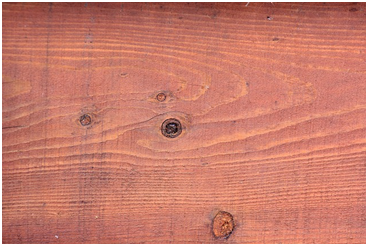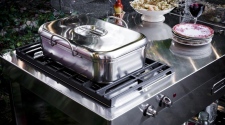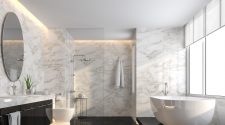Wood is not only the most versatile resource in the world, but is also renewable and sustainable which makes it highly environmentally-friendly. The popularity of a cork flooring range is the perfect example for this. It is one of the most beneficial ecological products in the market. Its insulation capacities and anti-microbial properties result in high quality surfaces.This is one of primary reasons why many people incorporate it in their home furniture. Unlike glass and ceramic, wood is less susceptible to damage and thus is more durable. There is a wide range of choice among wood types. Not all types can be found in all countries since as organic resources, they only grow in specific geographical regions. The advancements in the transportation system have alleviated this issue and therefore, even the rarest of woods are transported into other countries.This has opened furniture makers and interior designers to a larger range of wood types including the ones mentioned below.

Chestnut
Chestnut is a type of hardwood which originates from various regions in the Northern Hemisphere. There are quite a few varieties with the type. Amongst them, the predominantly used type is the Spanish chestnut. You will probably not find large pieces of furniture made in chestnut wood since it has durability issues. The durability of the wood diminishes once it reaches fifty years of age. Thus, furniture makers do not create long furniture since it will easily deteriorate with time. This is why chestnut is only used to create small furniture types especially for outdoor purposes. For example, most outdoor fencing timber is manufactured out of chestnut.
Elm
The wood has an interlocking grim which makes it much less susceptible towards splitting. This high resistance proves to be very useful when manufacturing products such as coffins and chairs. The benefit of this wood has been known since the middle ages. It was the main resource used to create long bows during the time, which was their main weapon of defence. Elm wood is also considered plain when compared to other available options. Moreover, since the wood can be carved into straight and long planks, it is mainly used to construct keels during ship construction processes.
Pine
Pine is a region-specific wood, but is made available in many markets through frequent exports due to its high demand. It grows mainly in Scandinavian countries since the climate and atmosphere is highly suitable for its growth. The high demand for the wood is not only because of its uniform and singular texture but also due to its ability to be flexible for the worker. These reasons make Pine easy to work with for carpenters. It is used for various productions including pallets, home furniture and panels. In spite of its wide grain issue, the wood is able to show high resistance to shrinking, warping and swelling.
Walnut
Walnut is a type of hardwood that is used for the creation of home furniture. The appearance of the wood with its dark colour and fine texture makes it very popular among furniture manufacturers. What’s more, it is very easy to work with as well. Apart from being used for the manufacturing of furniture, walnut is also used for cabinet building, wall panelling and for the creation of decorative elements such as trinkets. There are two main types of walnuts, the English and Black, which are native to Persia and America respectively.
Redwood
This is not only famous amongst furniture makers but also the purchasers as well. You will be able to spot this along the lower coast of America. Redwood is light and slightly durable which makes it softwood. The wood has natural resistance to decay and thus is commonly used for manufacturing outdoor furniture such as fencing and panelling which reduces its susceptibility to rotting. The wood’s appearance has a mixture of deep pink and red throughout the grain which is why it is called redwood.
Cork
Cork still hasn’t found its way to the furniture market but it’s a must-have on a list discussing about wood types due to its unique properties and extensive uses. Most people consider cork to be synonymous with bottle stoppers for wine bottles. However, with its elasticity and comfortable texture, cork is slowly making a name in the flooring and wall industry. Due to its relative unpopularity in comparison to other materials and thereby unique finish that it provides, you should certainly look into cork if you are planning to renovate an establishment you own.
Apart from these, there are many other types of wood that one can consider as well. These include cedar, oak, rosewood, line, fir, hemlock, mahogany, maple, plywood and spruce. Any of these woods would be a better alternative for other home furniture materials such as glass, plastic and steel. This is not only in terms of appearance but also in terms of its quality, durability and affordability.
















